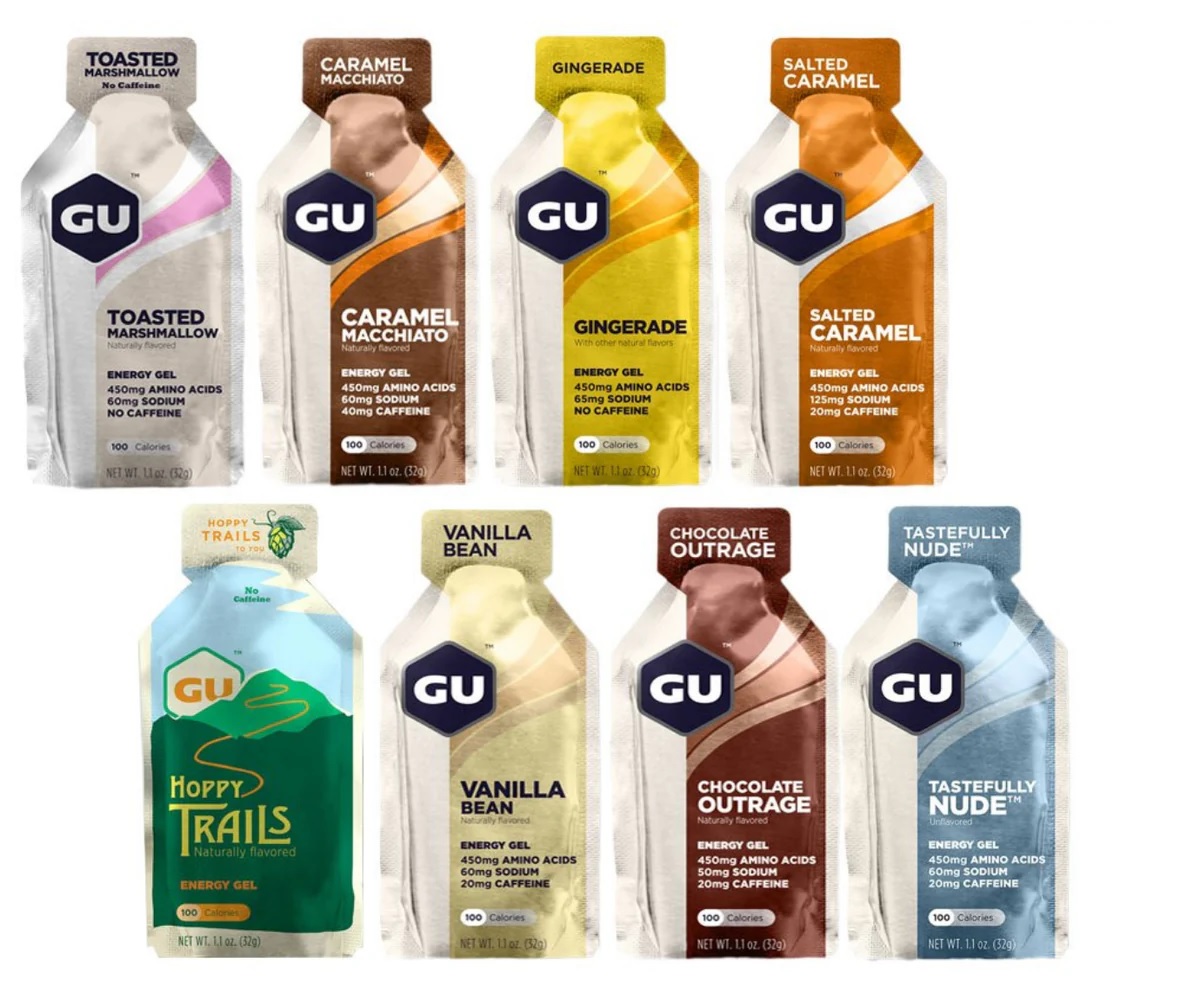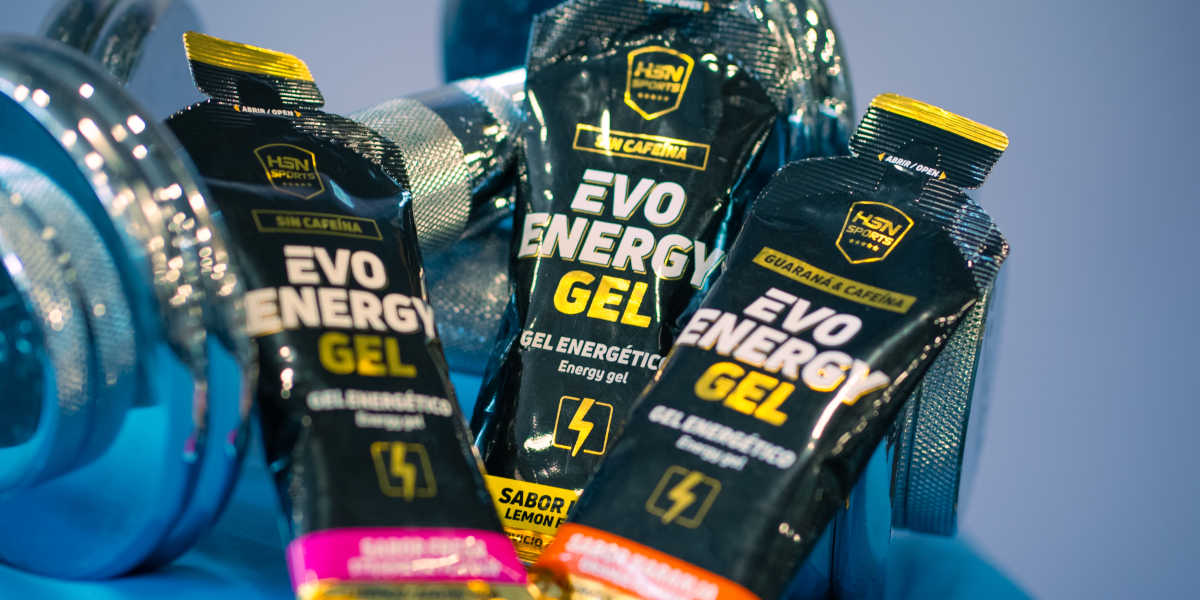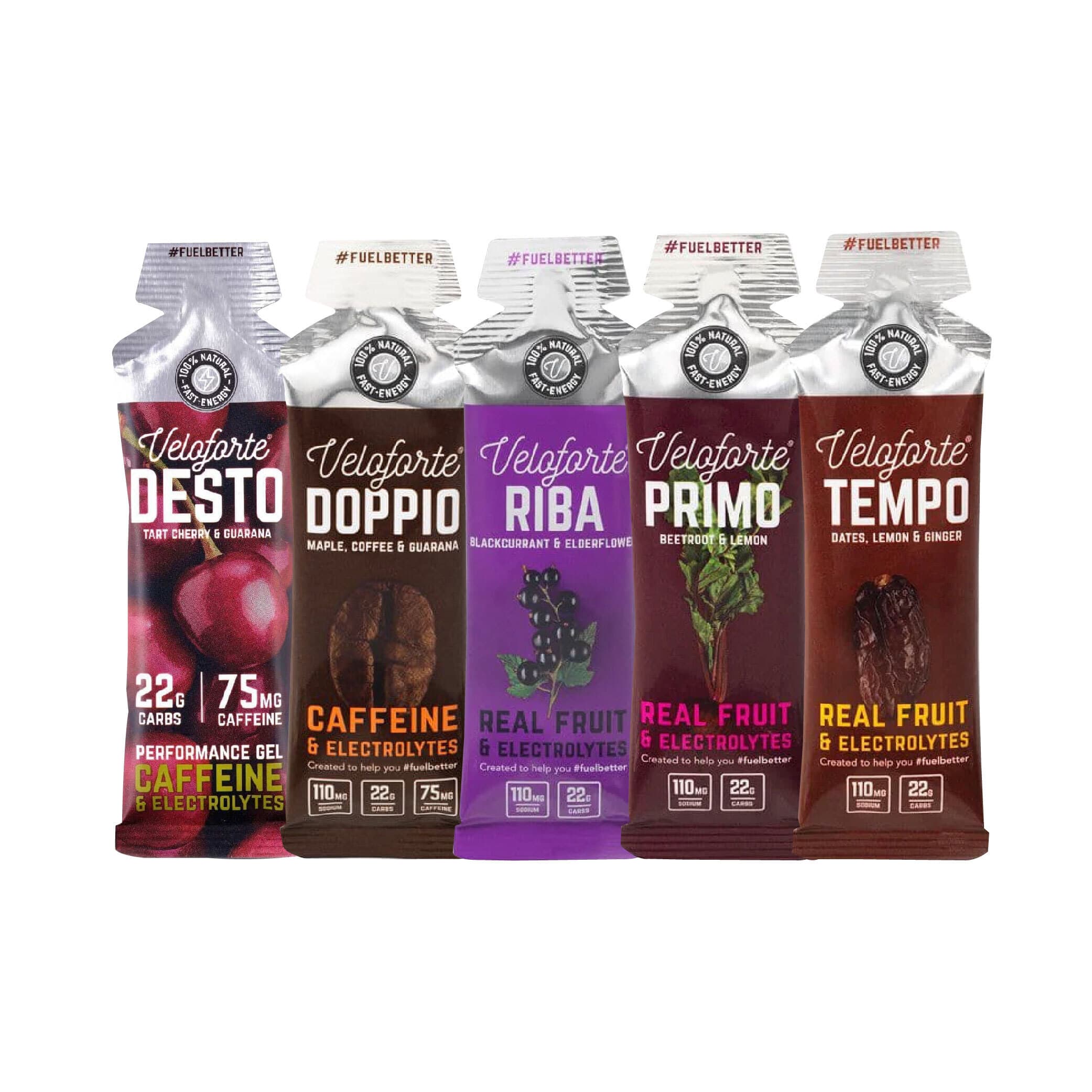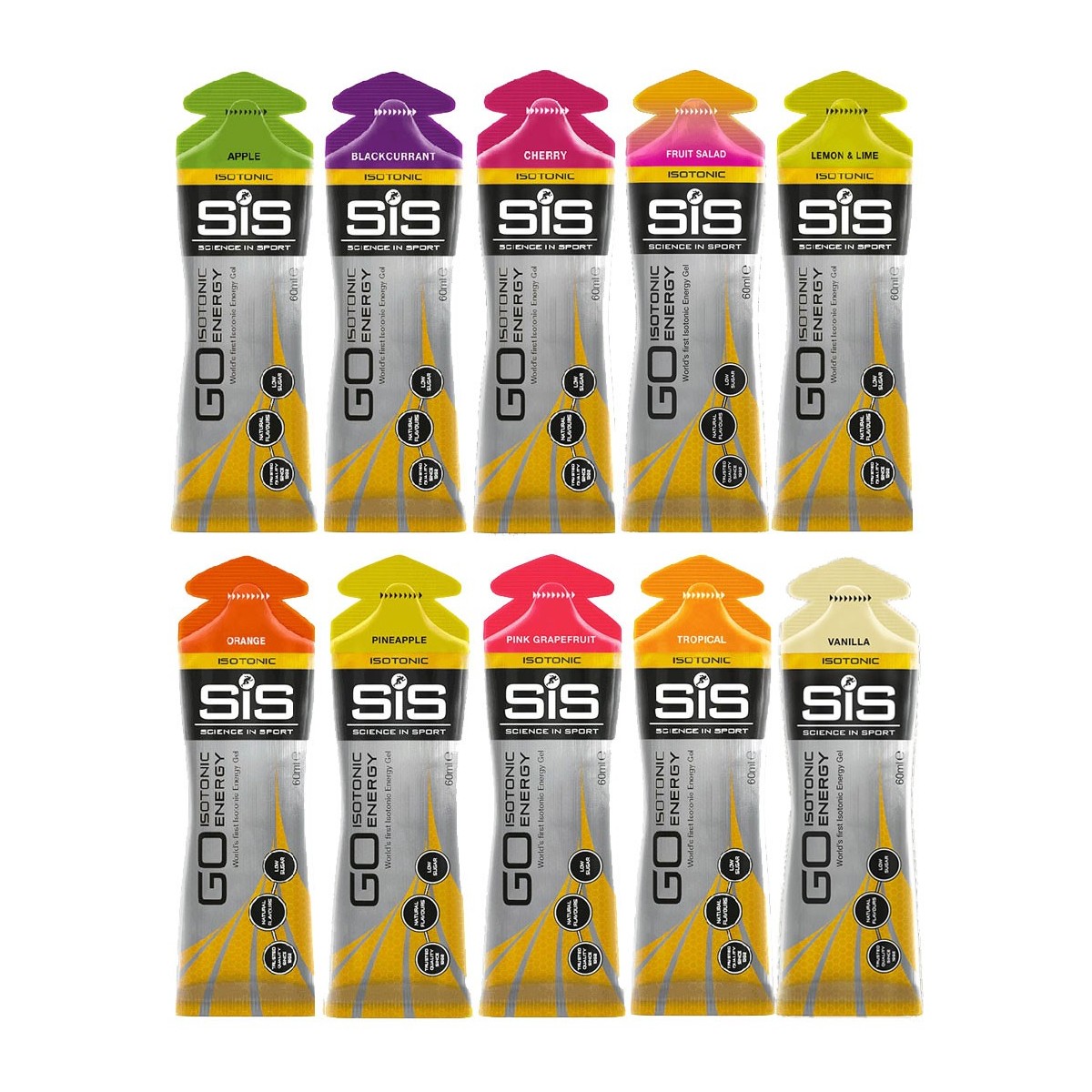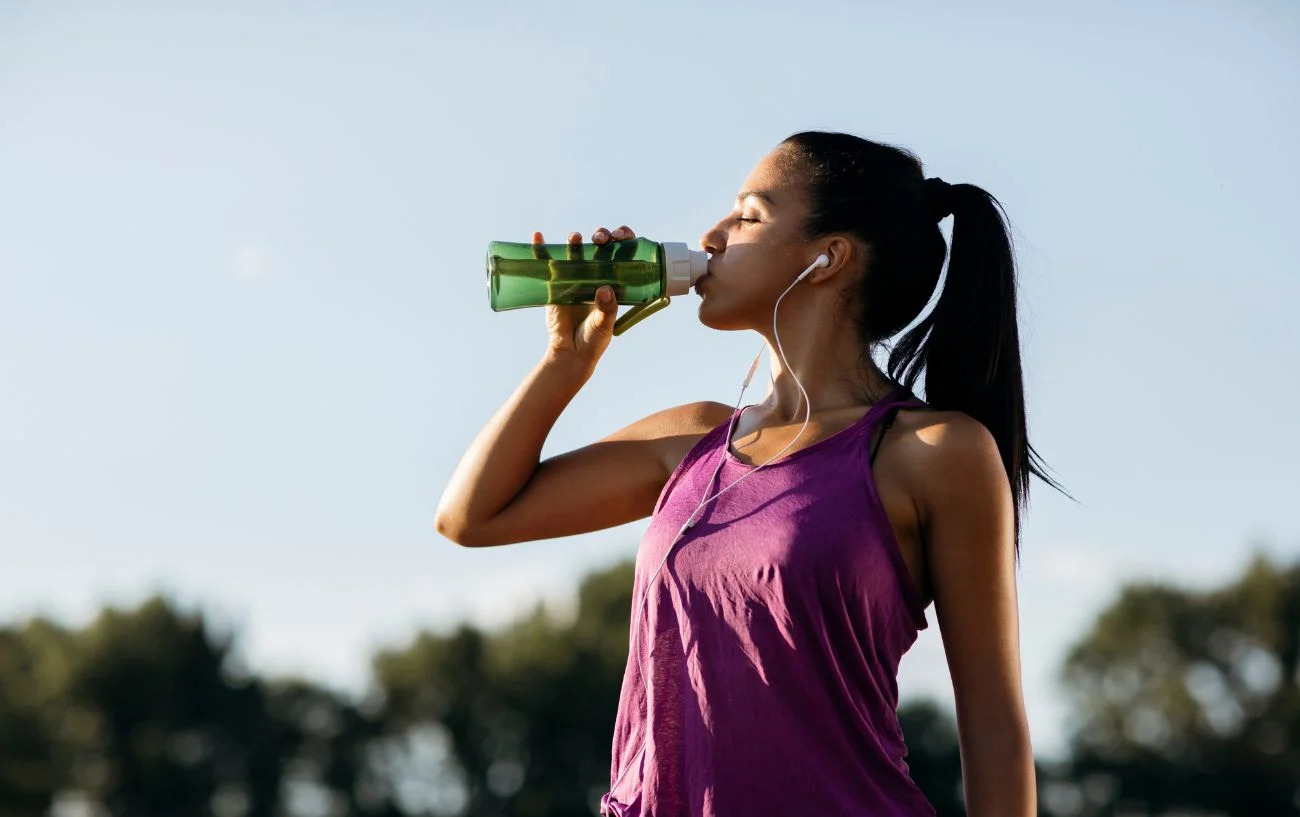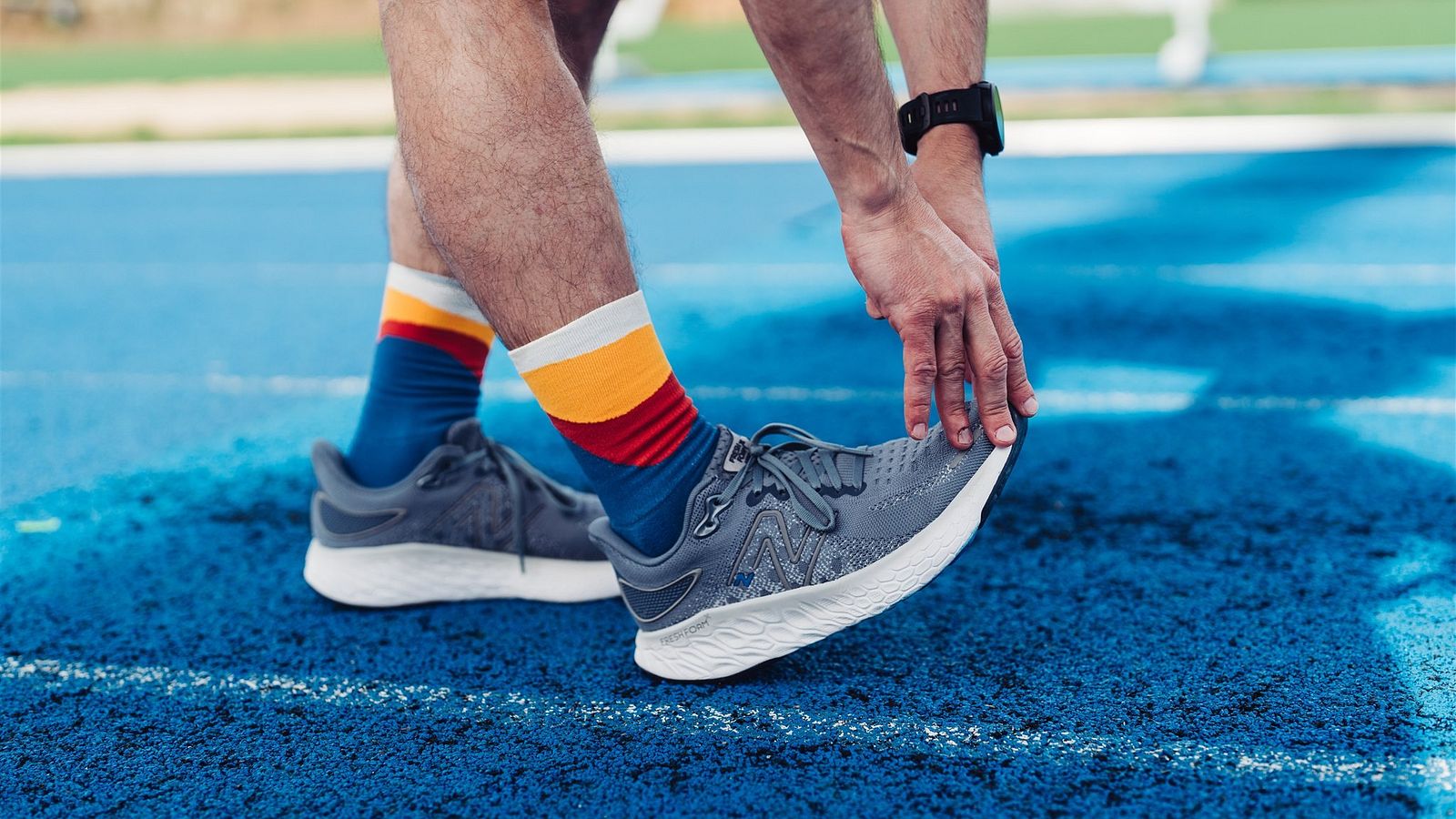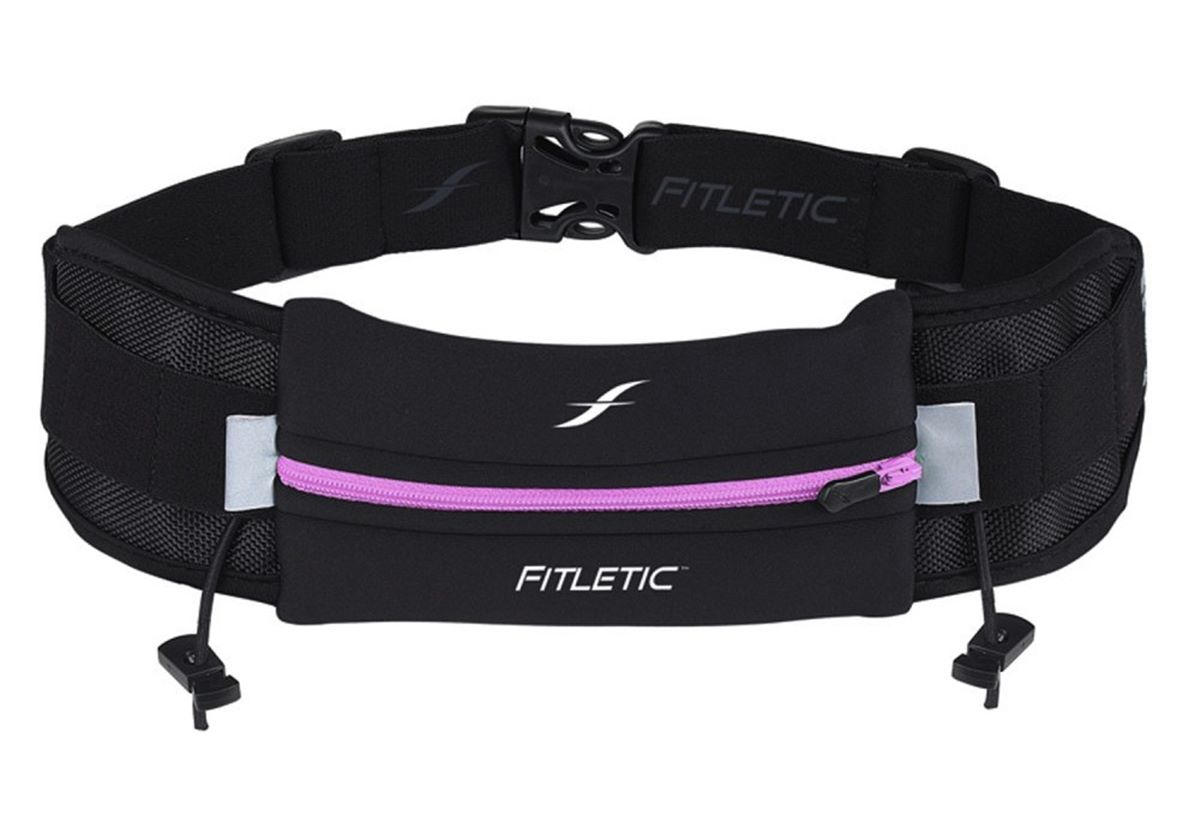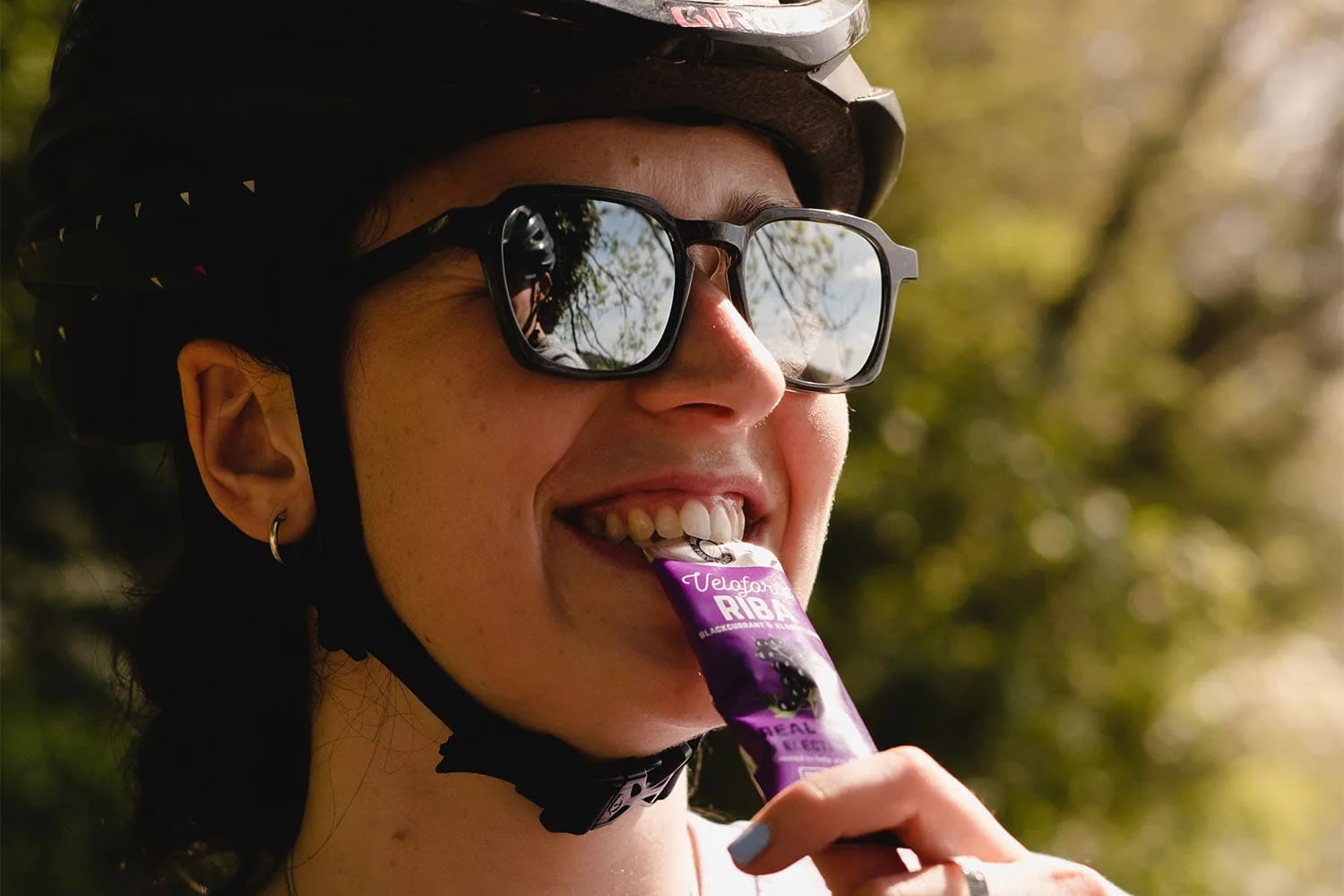

Featured
When To Use Energy Gels For Running
Modified: October 18, 2023
Discover when to use energy gels while running and boost your performance. Featured tips and guidelines to optimize your training and races.
Introduction
Welcome to the world of long-distance running, where the thrill of pushing your physical limits meets the challenge of enduring fatigue and maintaining energy levels. As a seasoned runner or someone new to the sport, you may have heard about energy gels and their role in enhancing performance during long runs. But what exactly are energy gels, and how can they impact your running experience? In this article, we will explore the benefits, usage, and potential side effects of energy gels to help you make an informed decision on when to incorporate them into your running routine.
Energy gels are concentrated sources of carbohydrates designed to provide quick and easily digestible fuel for endurance activities like running. They are available in small, portable pouches that you can easily carry with you during your run. Unlike solid foods, energy gels can be consumed without the need for chewing, allowing for quick absorption into your system. They are specifically formulated to deliver a mix of glucose and fructose, which are rapidly converted to glycogen – the primary fuel source for your muscles. This immediate energy boost can help prevent fatigue and keep you going strong through long-distance runs.
So, why would you need energy gels? Well, as you run, your body relies on stored glycogen for fuel. However, the body has a limited supply of glycogen, which can become depleted after a certain distance, resulting in the infamous “hitting the wall” feeling. Energy gels act as a supplemental source of glycogen, ensuring that your body has an ongoing supply of energy to sustain your performance without crashing.
Not only do energy gels provide a quick and easily digestible source of energy, but they also offer other benefits. Many energy gels contain electrolytes like sodium and potassium, which are lost through sweat during intense physical activity. These electrolytes help to maintain proper hydration levels and prevent muscle cramps. Additionally, some energy gels are fortified with vitamins and antioxidants to aid in recovery and support overall well-being.
Now that we have established the purpose and benefits of energy gels, it’s important to understand how they work and how to use them effectively during your runs. In the following sections, we will delve deeper into the mechanics behind energy gels and provide guidance on when to incorporate them into your training regimen.
What are energy gels?
Energy gels are specifically formulated gel-like substances that are consumed during endurance activities like running to provide a quick and easily digestible source of fuel. These gels typically come in small, portable pouches that can be easily carried and consumed on the go.
Energy gels are primarily composed of carbohydrates, which are the body’s preferred source of energy during physical activity. The most common types of carbohydrates found in energy gels are glucose and fructose. Glucose is a simple sugar that can be quickly absorbed by the body and used as immediate energy. Fructose, on the other hand, is a natural sugar that is slightly slower to be absorbed but provides sustained energy over a longer duration.
In addition to carbohydrates, many energy gels also contain electrolytes and other nutrients. Electrolytes, such as sodium and potassium, help replenish the body’s electrolyte balance, which is crucial for maintaining proper hydration levels and preventing muscle cramps during prolonged exercise. Some energy gels may also contain vitamins, minerals, and antioxidants to support overall well-being and aid in post-run recovery.
The texture of energy gels is designed to be easily consumed while running. They have a consistency similar to that of a thick syrup or jelly, allowing for easy swallowing and digestion. Unlike solid foods, energy gels require minimal chewing, making them convenient for athletes on the go. However, it’s essential to consume energy gels with water to aid in the digestion process and prevent any potential stomach discomfort.
Energy gels are available in various flavors to cater to different taste preferences. Popular flavors include fruit, chocolate, coffee, and vanilla. Some gels even offer caffeine as an added ingredient, providing an extra boost of energy and enhanced focus during longer runs.
It’s important to note that while energy gels can be a valuable tool for endurance athletes, they should not completely replace a well-balanced diet. They are designed to supplement your nutritional needs during intense physical activity, but they should be used in conjunction with regular meals to ensure your body receives a wide range of nutrients.
Now that we have a good understanding of what energy gels are, let’s dive deeper into their benefits and how they can enhance your running performance.
Benefits of energy gels for running
Energy gels offer several key benefits for runners, making them a popular choice for endurance athletes. Here are some of the significant advantages of incorporating energy gels into your running routine:
1. Convenient and Portable: Energy gels come in small, lightweight pouches that are easy to carry during your runs. This convenience allows you to refuel on the go without the need for bulky snacks or meals. You can simply stash a few energy gels in your pocket or running belt and consume them whenever you need a quick energy boost.
2. Quick and Easily Digestible Fuel: During long-distance runs, your body needs a continuous supply of energy to sustain performance. Energy gels provide a concentrated source of carbohydrates that are rapidly absorbed and converted into glycogen – the fuel source for your muscles. Unlike solid foods, energy gels require minimal digesting, allowing for quick absorption and an immediate energy boost.
3. Countered Fatigue and Improved Endurance: Running for extended periods can lead to fatigue and a decline in performance. Energy gels provide a readily available source of energy, preventing the depletion of glycogen stores and delaying the onset of fatigue. By maintaining optimal energy levels, energy gels can help improve your endurance and push through challenging runs.
4. Customizable Energy Intake: Energy gels allow you to tailor your carbohydrate intake based on your individual needs. Most energy gels come with clear packaging indicating the amount of carbohydrates per serving. This enables you to easily adjust your fueling strategy based on the duration and intensity of your run. Whether you need a small burst of energy or a more substantial fuel source, energy gels offer flexibility in meeting your specific requirements.
5. Electrolyte and Nutrient Replenishment: Many energy gels contain electrolytes like sodium and potassium, which are essential for maintaining proper hydration levels and preventing muscle cramps. These electrolytes are lost through sweat during intense exercise and need to be replenished. Additionally, some energy gels are fortified with vitamins and antioxidants, supporting your overall health and aiding in post-run recovery.
6. Improved Hydration: When consumed with water, energy gels can help improve hydration levels during your runs. The combination of carbohydrates and water assists in efficient absorption and utilization of the energy gel, ensuring that your body stays properly hydrated throughout your run.
7. Enhanced Mental Focus: Certain energy gels contain caffeine, which is known for its stimulating effects on the central nervous system. Caffeine can enhance alertness, focus, and cognitive function, making it a valuable tool for longer runs and races where mental fatigue can be a limiting factor.
8. Taste and Variety: Energy gels come in a wide range of flavors, allowing you to find options that are not only effective but also enjoyable to consume. This variety can help prevent taste fatigue during extended runs and make fueling a more pleasant experience.
With these benefits in mind, it’s crucial to understand how energy gels actually work and how to use them effectively during your runs. Let’s dive into the mechanics of energy gels and explore their optimal usage strategies.
How do energy gels work?
Energy gels work by providing a concentrated source of easily digestible carbohydrates that are quickly absorbed by the body and converted into glycogen – the primary fuel source for your muscles. Here’s a closer look at how energy gels work:
During prolonged exercise, your body relies on stored glycogen in the muscles and liver for energy. As these glycogen stores deplete, your performance can decline, and you may experience fatigue. Energy gels help replenish glycogen levels, providing a readily available source of fuel to support your running performance.
Most energy gels contain a combination of glucose and fructose. Glucose is a simple sugar that can be rapidly absorbed by the body, providing an immediate burst of energy. However, the body’s ability to absorb glucose is limited. By combining glucose with fructose, energy gels can increase the amount of carbohydrates that can be absorbed by the body and utilized as energy.
Upon consumption, the carbohydrates in energy gels are broken down into glucose and fructose. Glucose is quickly absorbed and used as immediate energy, while fructose is metabolized at a slightly slower rate, providing sustained energy over a longer duration. This dual-action of glucose and fructose allows for a steady supply of fuel to be delivered to your muscles, helping to prevent glycogen depletion and delay the onset of fatigue.
To ensure optimal absorption and utilization, it’s important to consume energy gels with water. Water helps dilute the gel, making it easier to digest and preventing any potential discomfort in the stomach. It also aids in the quick absorption of the carbohydrates, allowing for efficient delivery of energy to your muscles.
In addition to carbohydrates, many energy gels also contain electrolytes such as sodium and potassium. These electrolytes help replenish what is lost through sweat during intense physical activity. Maintaining proper electrolyte balance is essential for hydration, muscle function, and preventing cramping. By including electrolytes in energy gels, they help support hydration and overall performance during your runs.
Furthermore, some energy gels may also contain additional nutrients like vitamins and antioxidants. These nutrients can aid in post-run recovery, support immune function, and promote overall well-being.
When using energy gels, it’s important to follow the recommended guidelines provided by the manufacturer. This includes timing and frequency of consumption, as well as the suggested amount of carbohydrates per serving. Adhering to these guidelines will ensure that you are getting the right amount of fuel to sustain your energy levels throughout your run.
Now that we understand how energy gels work, let’s explore how to effectively incorporate them into your running routine.
How to use energy gels effectively during running
Using energy gels effectively during running is crucial to maximize their benefits and support your performance. Here are some tips and guidelines to help you use energy gels effectively:
1. Experiment during training: Every runner is unique, and what works for one person may not work for another. Use your training runs to experiment with different energy gel brands, flavors, and consumption strategies. This will help you find what works best for your body and preferences.
2. Follow the instructions: Read and follow the manufacturer’s instructions for the specific energy gel you are using. Pay attention to the suggested timing and frequency of consumption, as well as the recommended amount of carbohydrates per serving. This information is typically found on the packaging or the manufacturer’s website.
3. Timing is key: To effectively use energy gels during your run, it’s important to consume them at the right times. Generally, it’s recommended to take an energy gel every 45 minutes to 1 hour during longer runs or races. However, this may vary depending on your individual needs and the intensity of your run. Experiment with timing to find what works best for you.
4. Take with water: Energy gels should be consumed with water to aid in digestion and absorption. This helps prevent any potential stomach discomfort and ensures that the carbohydrates are efficiently delivered to your muscles. Sip water immediately after taking the gel to wash it down and promote absorption.
5. Don’t wait until you’re fatigued: It’s best to consume energy gels before you start feeling tired or hitting a wall. By taking gels earlier in your run, you can maintain more consistent energy levels and prevent a sudden drop in performance. Remember, prevention is key when it comes to fueling during long-distance runs.
6. Practice fueling on your long runs: Use your long training runs as an opportunity to practice your fueling strategy. This will help you refine your plan, understand how your body reacts to the gels, and build confidence in your ability to fuel effectively during races or other important runs.
7. Listen to your body: Pay attention to how your body responds to the energy gels. If you experience any negative side effects like stomach discomfort or bloating, consider adjusting the timing or frequency of consumption, or trying a different brand or flavor.
8. Combine with other fuel sources: While energy gels can be an effective source of fuel, they should not be your sole source of nutrition during runs. It’s important to incorporate a well-balanced diet that includes carbohydrates, proteins, and healthy fats on a daily basis. During longer runs, consider supplementing energy gels with other fuel sources like energy bars, fruits, or sports drinks to provide a more comprehensive nutritional profile.
9. Stay consistent: Once you find a fueling strategy that works for you, stick to it. Consistency is key when it comes to optimizing your performance and avoiding any potential digestive issues or energy fluctuations.
By following these guidelines and listening to your body, you can effectively use energy gels during your runs to maintain optimal energy levels and support your performance.
Recommended energy gel brands for runners
When it comes to choosing energy gels, there are numerous brands on the market, each offering a variety of flavors, formulations, and additional features. Here are some recommended energy gel brands for runners:
1. GU Energy: GU Energy is a popular brand known for its wide range of energy gel flavors, including classics like vanilla, chocolate, and fruity options. They have different formulations available, such as their original Energy Gel, Roctane Energy Gel with added amino acids, and the revamped Roctane Energy Gel with an improved texture.
2. Clif Bar: Clif Bar offers a variety of energy gels under their “Clif Shot” range. Their gels are made with organic ingredients and come in flavors like Raspberry, Citrus, and Chocolate. Clif Bar also offers caffeinated options for those seeking an extra boost during their runs.
3. Hammer Nutrition: Hammer Nutrition provides a range of energy gels with different carbohydrate compositions and flavors. Their gels are designed to be easy on the stomach and provide a sustained energy release. Hammer Nutrition also offers options for those with dietary restrictions, such as gluten-free and vegan-friendly gels.
4. PowerGel: PowerGel is a well-known brand that offers a variety of energy gels with different carbohydrate blends. They have a range of flavors, including fruity and caffeinated options. PowerGel gels are designed to be easy to consume and provide a quick energy boost during intense workouts.
5. Honey Stinger: Honey Stinger offers energy gels made with natural ingredients, including organic honey, which provides a unique taste profile. They have a variety of flavors available, including fruit-based options. Honey Stinger gels are formulated to provide sustained energy and are popular among endurance athletes.
6. GU Roctane: GU Roctane Energy Gels are specifically designed for intense and prolonged endurance activities. They contain a higher concentration of electrolytes and amino acids for enhanced performance and recovery. GU Roctane gels come in flavors like Cherry Lime, Blueberry Pomegranate, and Sea Salt Chocolate.
7. Maurten: Maurten offers energy gels that use a unique hydrogel technology to optimize absorption and reduce the risk of gastrointestinal issues. Their gels are used by professional athletes and are known for their effectiveness in delivering energy without causing stomach discomfort. Maurten gels come in a range of flavors, including Apple, Lemon-lime, and Raspberry.
8. Science in Sport (SiS): SiS offers a variety of energy gels with different carbohydrate blends and flavors. They provide a range of options, including caffeinated gels for an extra kick. SiS gels are designed to be easily digestible and provide a sustained energy release during endurance activities.
Remember, the best energy gel brand for you will ultimately depend on personal preference, taste, and how your body responds to different formulations. It’s important to try different brands and flavors during training runs to find the ones that work best for you.
Now that we have explored some recommended brands, let’s discuss potential side effects of energy gels to be aware of.
Potential side effects of energy gels
While energy gels can be a valuable tool for fueling during long runs, it’s important to be aware of potential side effects that may arise. Here are some potential side effects of energy gels:
1. Stomach discomfort: One of the most common side effects of energy gels is stomach discomfort or gastrointestinal issues. This can range from feelings of bloating and gas to more severe symptoms like nausea or diarrhea. To minimize the risk of stomach discomfort, it’s crucial to consume energy gels with water and follow the recommended amount per serving.
2. Taste fatigue: Energy gels typically have a sweet taste due to their high carbohydrate content. Some runners may experience taste fatigue, especially during longer runs or races where they need to consume multiple gels. To combat taste fatigue, consider trying different flavors or brands, or incorporating other fuel sources like energy chews or bars alongside energy gels.
3. Negative interactions with other foods or supplements: Energy gels are designed to be consumed on their own or with water. Consuming them with other foods or supplements that may not be compatible can lead to digestive issues or interfere with their absorption. It’s important to be mindful of the timing and combination of fuel sources to avoid any negative interactions.
4. Allergic reactions: Some energy gels may contain allergens like nuts or gluten. It’s important to carefully read the ingredient list of the energy gel to ensure that it is safe for you to consume. If you have any known food allergies or sensitivities, opt for energy gels that are labeled as allergen-free or consult with a healthcare professional before trying new brands.
5. Overconsumption: While energy gels provide a quick and easily digestible source of energy, it’s important not to rely solely on them for fueling during runs. Overconsumption of energy gels without proper hydration or supplementation with other fuel sources can lead to imbalances and potential performance issues. It’s essential to have a well-rounded, balanced approach to fueling during long runs or races.
6. Caffeine sensitivity: Some energy gels contain caffeine, which can provide an extra boost of energy and focus. However, individuals who are sensitive to caffeine may experience jitteriness, increased heart rate, or difficulty sleeping. Be mindful of your caffeine tolerance and opt for caffeine-free options if necessary.
7. Individual tolerance: Each individual may have different tolerance levels and reactions to energy gels. What works well for one runner may not work for another. It’s essential to listen to your body, pay attention to how you feel during and after consuming energy gels, and make adjustments accordingly.
If you experience any significant or prolonged side effects from energy gels, it’s important to consult with a healthcare professional. They can provide personalized advice and guidance based on your individual needs and health conditions.
Now that we have discussed the potential side effects of energy gels, let’s explore when it’s best to use them during a run.
When to use energy gels during a run
Timing your consumption of energy gels during a run is crucial to optimizing their effectiveness and maintaining your energy levels. Here are some guidelines on when to use energy gels:
1. Long-distance runs: Energy gels are especially beneficial during long-distance runs, typically those lasting longer than 90 minutes. As your body depletes its glycogen stores, energy gels can help replenish those stores and provide a quick source of fuel to sustain your performance.
2. During high-intensity segments: If your run includes high-intensity segments such as hill sprints or intervals, consuming an energy gel before or during these segments can provide a quick energy boost to help you power through the exertion.
3. When fatigue sets in: As you begin to feel fatigue or a drop in energy levels during a run, it’s a good time to consume an energy gel. This can help prevent hitting the proverbial wall and provide an immediate source of fuel to keep you going strong.
4. Based on individual needs: Every runner is different, and the timing of energy gel consumption can vary based on individual preferences and needs. Some runners may prefer to take a gel every 45 minutes, while others may find that they need one every hour. Pay attention to your body’s signals and adjust your gel consumption accordingly.
5. During races or competition: Energy gels are commonly used during races or competition, especially in longer distance events. It’s essential to practice your fueling strategy during training runs to determine when and how often to consume energy gels based on the specific race distance and your individual requirements.
6. With sufficient water intake: Energy gels should be consumed with water to aid in digestion and optimize absorption. Sip water immediately after taking an energy gel to help wash it down and promote quick absorption.
Remember, it’s crucial to listen to your body and be mindful of your energy levels. If you feel you need an energy boost, it may be a good time to take an energy gel. It’s better to fuel proactively to avoid a sudden energy crash.
Additionally, it’s important to practice your fueling strategy during your training runs leading up to a race or important run. This will help you fine-tune your gel consumption and ensure that your body responds well to the fueling approach you’ve chosen.
Now that we have covered when to use energy gels during a run, let’s summarize the key points discussed in this article.
Conclusion
Energy gels can be a valuable tool for runners looking to enhance their performance and maintain energy levels during long-distance runs. By providing a concentrated source of easily digestible carbohydrates, electrolytes, and additional nutrients, energy gels offer quick fuel replenishment and can help delay the onset of fatigue.
When choosing energy gels, it’s important to consider factors such as taste, texture, and individual tolerance. Experimentation during training runs will help you find the brands, flavors, and consumption strategies that work best for you.
Timing is key when it comes to consuming energy gels during a run. They are most effective during long-distance runs, high-intensity segments, or when fatigue sets in. Pay attention to your body’s signals, and fuel proactively to prevent energy crashes and optimize your performance.
However, it’s essential to use energy gels in conjunction with a well-balanced diet and hydration strategy. They should not replace regular meals or other fuel sources entirely. Remember to consume energy gels with water to aid digestion and optimize absorption.
While energy gels offer numerous benefits, it’s important to be aware of potential side effects such as stomach discomfort, taste fatigue, and individual reactions. Listening to your body and adjusting your fueling strategy accordingly is key to maintaining an enjoyable and effective running experience.
In conclusion, energy gels can be a valuable addition to a runner’s fueling toolkit when used effectively and in moderation. By understanding their benefits, timing their consumption, and being mindful of potential side effects, you can optimize your running performance and maintain energy levels throughout your longest and most challenging runs.
